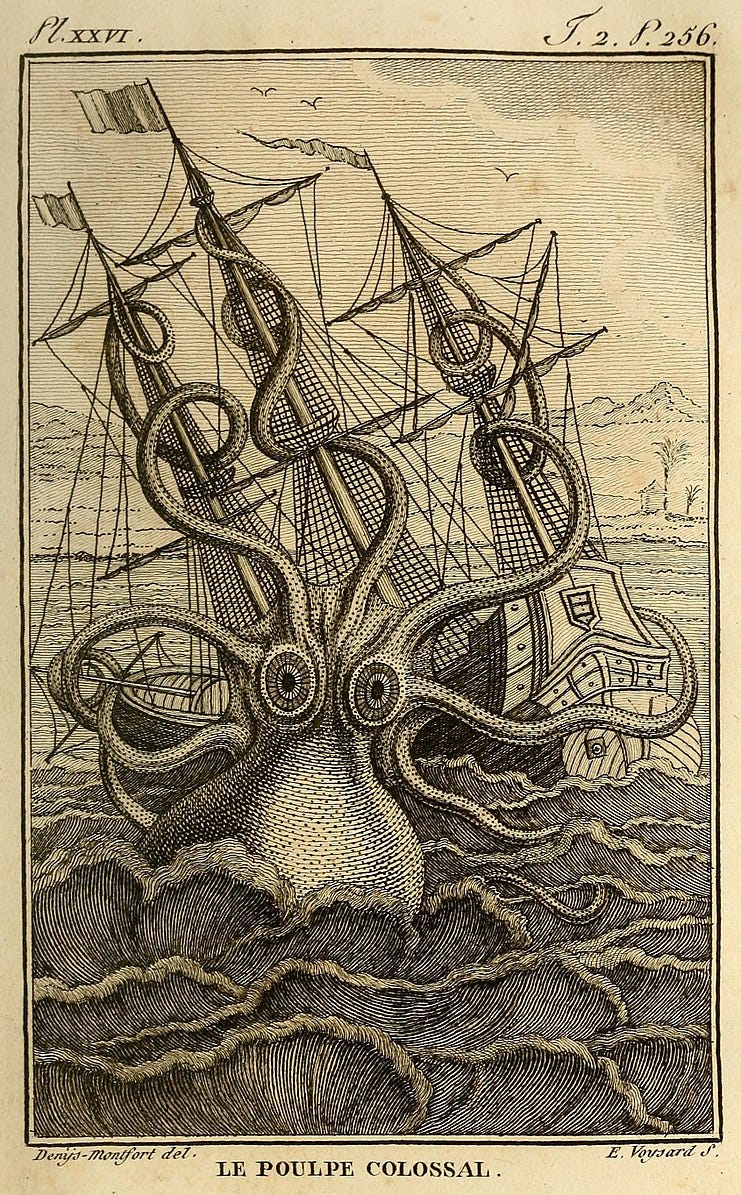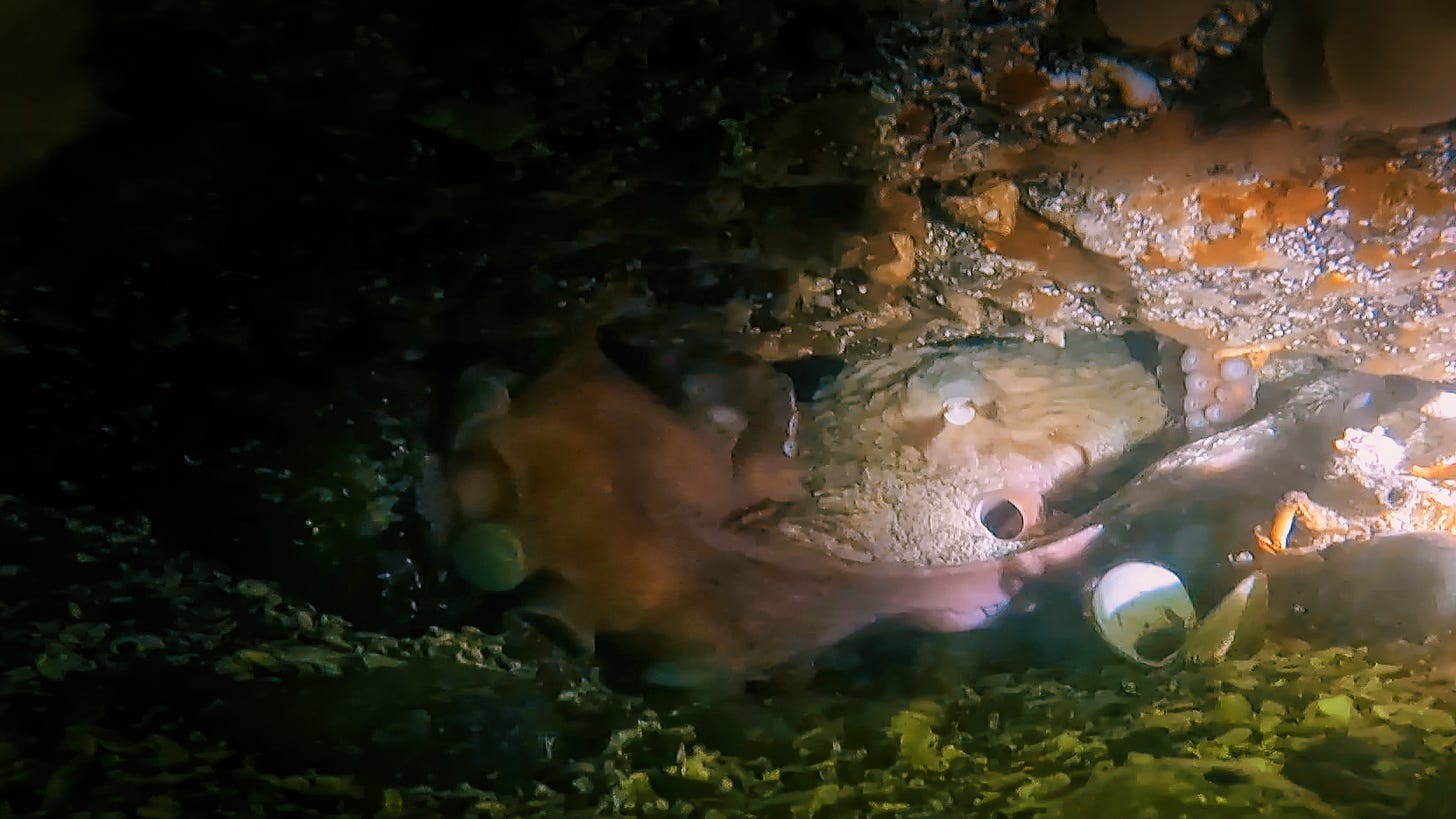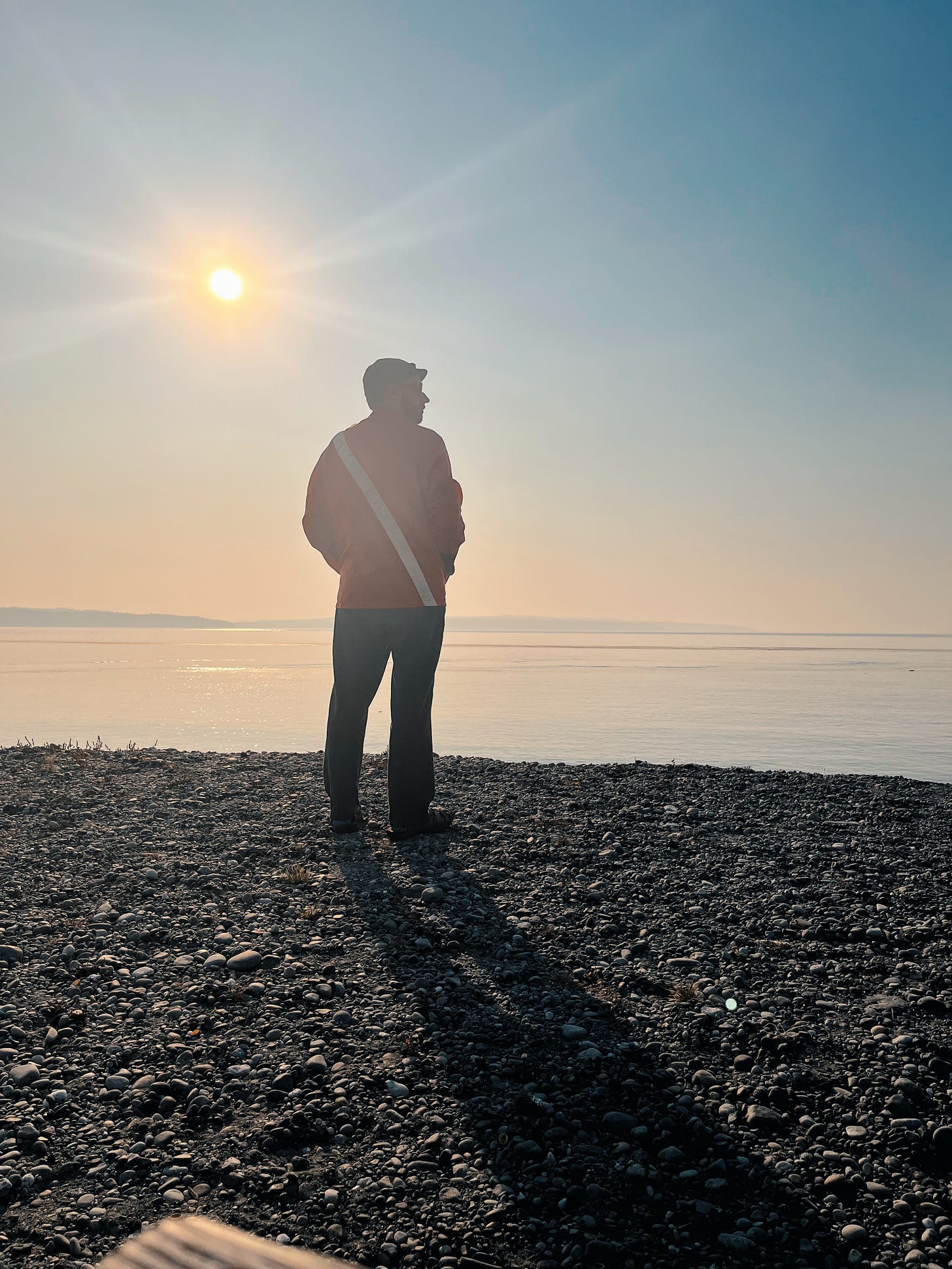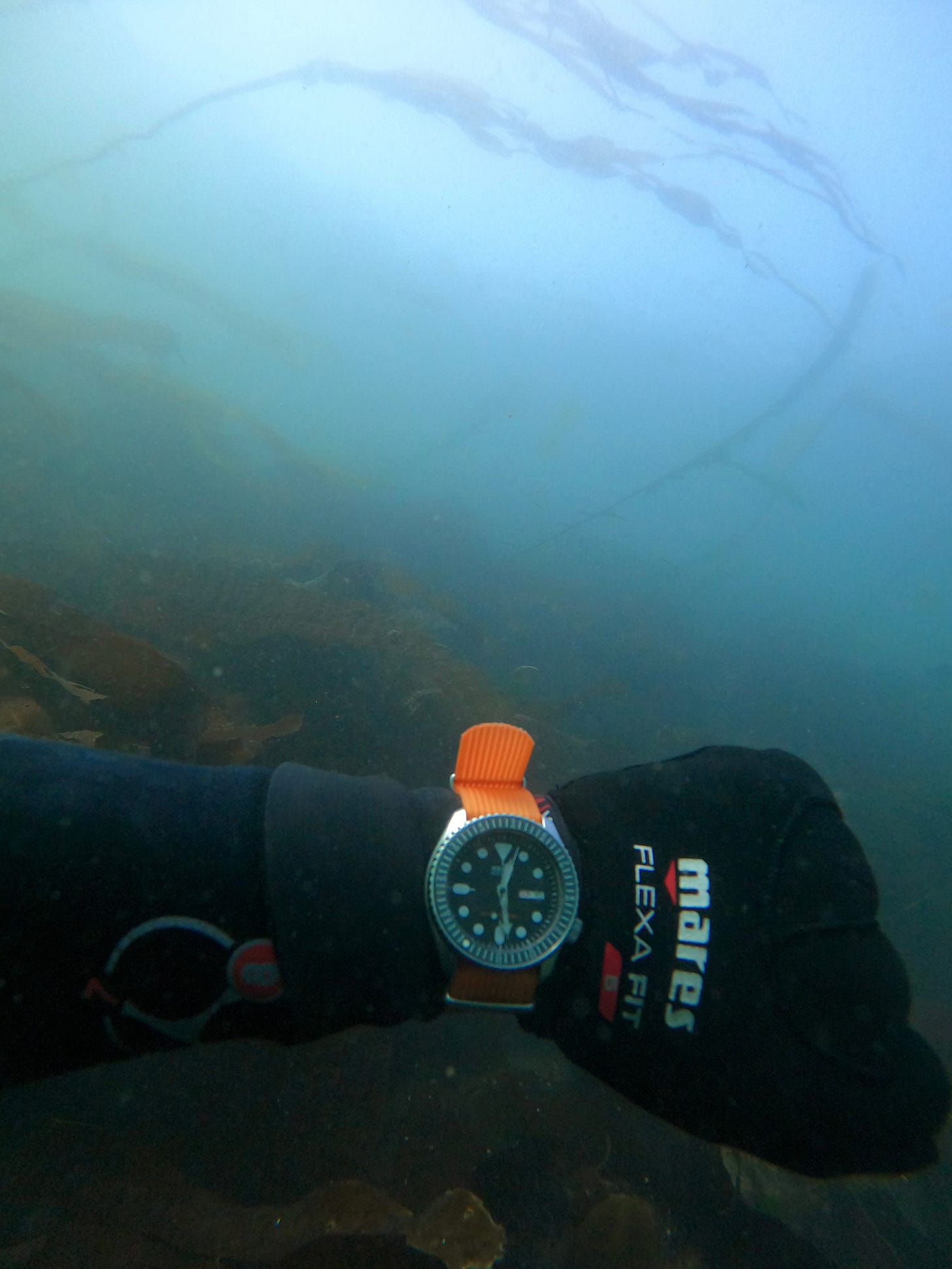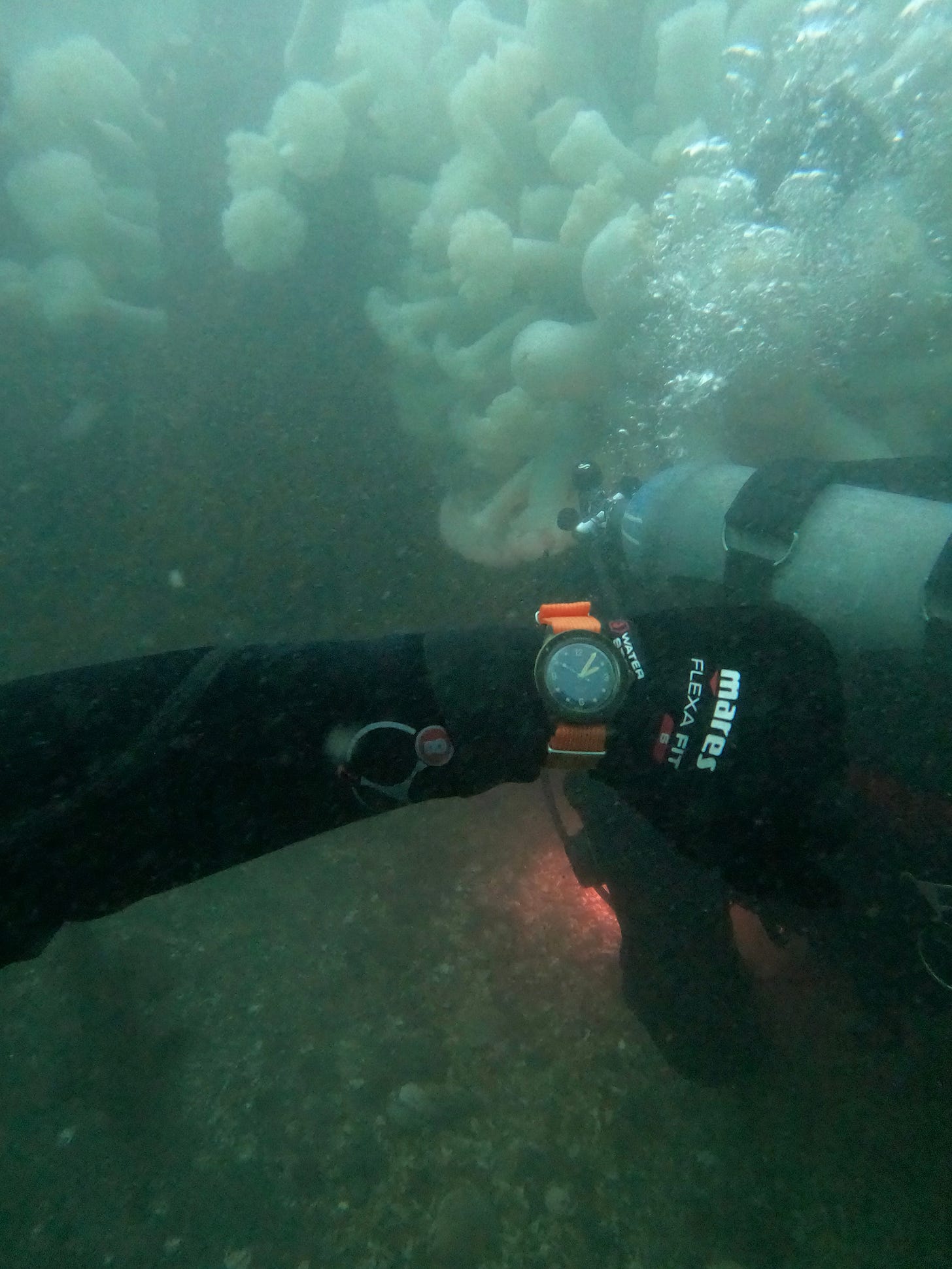Audio Narration of the article
Keystone is perhaps best known by locals for the ferry crossing that goes from Whidbey Island to Port Townsend. I, like so many, take this crossing regularly either visit family or to venture out to the Olympic Peninsula. The ferry port is just below the old Fort Casey (Historical State Park), and directly adjacent to where the ferry makes its runs for the day, are some old dock piling and line of rocks making a jetty. Match that with a strong current in that area, and you have yourself the perfect conditions to find yourself a GPO, or the Giant Pacific Octopus (Enteroctopus dofleini).
I’ve written before, my 6-year-old son is fascinated with all things ocean adventure. Not just from watching reto videos of Jaques-yves Cousteau, but rather the modern reincarnation of sea exploring with the Octonauts.
One morning, while watching an episode of the Octonauts, he was watching the “Creature Report” and discovered that the creature of the episode lives right here in his home of the Pacific Northwest.
I heard from the couch
“So, Dada, did you know they modeled the Octopod after the Pacific Octopus!”
From that day forward, he was all about seeing one. Or having me see one and bring home a video of a real one in the wild.
We’ve been to the aquarium and have seen a smaller octopus before, but when I told my son they can get much MUCH bigger, I could see his curiosity and bewilderment grow.
A PNW Giant
The GPO is big, and I mean really big. Stretched out its arms can have a wing span of 24 feet across, can lift up to 30 lbs, and can weigh 60 lbs in our area (but can reportedly get up to 160 lbs). It is one thing to see something like that in an aquarium, but from personal experience, it is a completely different feeling seeing in front of you sharing the same space underwater.
It is no wonder that there are so many old sea tales of killer octopus attacking boats and other diver tales about them.
Now fast forwarding 200 years since Le Poulpe Colssal, scientists know quite a bit more from those Tall ship tall-tales. The GPO are really introverts and prefer being solo. Divers have caught them being curious about things new to them and use their suckers to ‘taste’ to get to know what they are trying to understand (or maybe eventually eat). But to eat a Tall ship, I think would be too much fiber for their diet.
Looks from another world
Of course being a cephalopod, they have no bones and yet have incredible muscle in their arms. As a species, the GPO are the largest octopus in the world. Thats right, here in the Pacific Northwest, we are home to the largest octopus in the WORLD. That fact paired with how they look, that sci-fi ready out-of-this world look going for them, naturally lends themselves to be the inspiration of science fiction alien design, or dark Cthulhu tales. Anatomically they could be seen as quite alien to most terrestrial life we are used to, especially when you take into account they have two hearts (no not a Timelord) and have a copper based blood as opposed to iron based blood like us humans have.
Outside of literature or sea tales, here in the PNW our own unique contemporary pop culture has been influenced and created by this creature. From the famous Save the Pacific Northwest Tree Octopus campaign, to the decades long local lore behind the story of an ancient 600 lb giant octopus that lives below Tacoma’s “Galloping Gertie” or Tacoma Narrows bridge. That latter PNW tale, I have heard in so many different forms and it spans across several generations of divers. From tales dating back to the 60’s and 70’s where divers would talk about the King octopus taking off the mask of a a nearby diver, to more recently a KUOW article investigating a story from a teen who claims seeing huge tentacles towering out of the water, coming towards them while out on a date.
So big, but short lived.
While getting my tanks refilled, and catching up with the fabulous owner (and diver extraordinaire) of Gone Diving , I explained how stoked I was (and how my 6 year old would be after seeing the video) that on the dive, getting to see two GPO in the wild. She asked if I had heard to the old tales of the giant octopus under the Narrows. Nodding yes, and about to recount the tail, she stopped me and she pointed out something to all the stories that gets left out. Even though the GPO is smart, curious, huge, and reclusive; they unfortunately have a short life span. According to National Geographic
“They live to be about four years old, with both males and females dying soon after breeding. Females live long enough to tend fastidiously to their eggs, but they do not eat during this months-long brooding period, and usually die soon afterwards.”
So truly, in the case of the 60+ year old geriatric giant octopus under the Narrows bridge, it isn’t the same ‘sea monster’ talked about from diver generation to diver generation of local legend and lore (perhaps maybe a great great great great….relative. But really, probably not). It is true that GPO live in the waters below the Narrows because, much like Keystone Jetty, it is the perfect conditions for them. It is ever referred to as a hotspot for GPO because of the abundance of hiding-holes and strong currents and plenty of actual things they do eat .
Regardless of its lore, in the wild the Giant Pacific Octopus are incredible to see, and really it is one of several unique creatures we can experience here in the PNW. From my experience, I can attest that I didn’t see a huge sea-monster, nor did I have one try to play underwater peek-a-boo and reaching out to take my mask. Really, she didn’t care. Instead she just went on doing what the science book describer her as typically doing in the day. A docile creature, just being at home cozy and alone in her hiding-hole between the rocks of a jetty. Living quiet, curious, and as I found out, a sadly short life.
Or, in spite of the lore, another way of describing her; is a gentle giant, of the Pacific Northwest.



